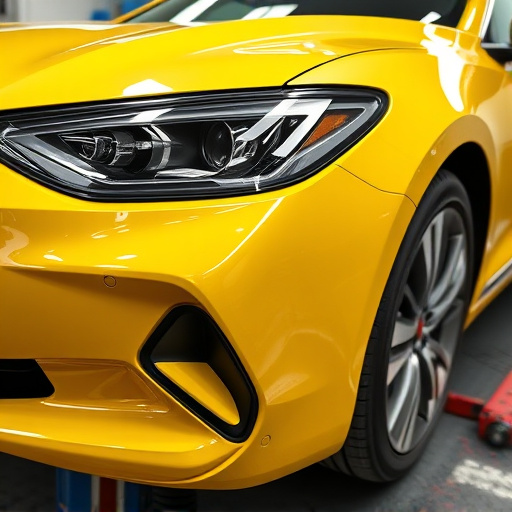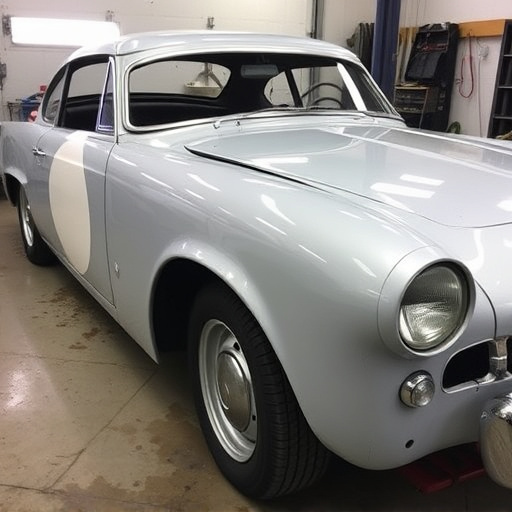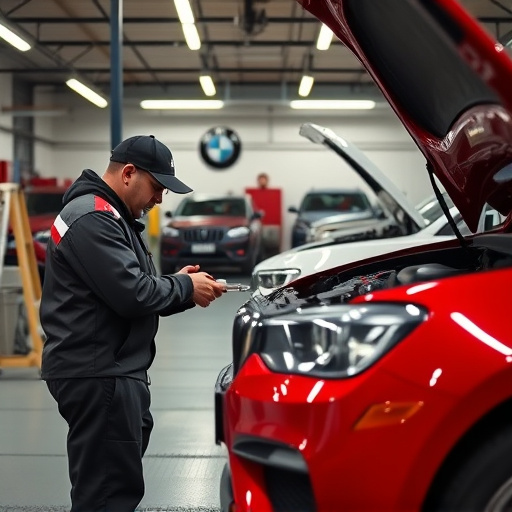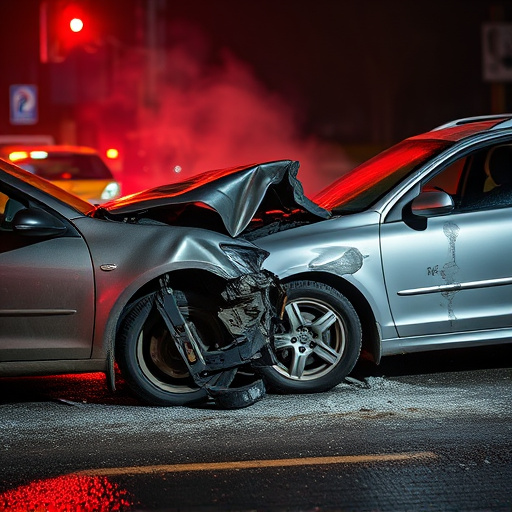Volatile Organic Compounds (VOCs) in traditional car repair methods pose health risks upon inhalation, especially in enclosed spaces. Low-VOC collision repair techniques using water-based or low-emitting paints mitigate these dangers, creating safer environments for technicians and customers. This eco-friendly approach reduces indoor air pollution, minimizes VOC emissions contributing to smog and climate change, aligns with consumer demand for greener solutions, and positions repair facilities as responsible stewards of public health and the environment.
In today’s digital era, understanding the health risks associated with volatile organic compounds (VOCs) is paramount. Specifically, traditional collision repair processes release high levels of VOCs, posing long-term exposure dangers for workers and customers alike. This article explores why adopting low-VOC collision repair methods significantly reduces these risks. We delve into the benefits, including improved air quality, enhanced worker safety, and the creation of safer workshops. By embracing low-VOC practices, the automotive industry can foster a healthier environment.
- Understanding VOCs and Their Health Impact
- The Benefits of Low-VOC Collision Repair
- Long-Term Exposure Prevention and Safer Workshops
Understanding VOCs and Their Health Impact

Volatile Organic Compounds (VOCs) are a group of chemicals that easily evaporate at room temperature, off-gassing into the air we breathe. Often found in paints, coatings, and certain cleaning products, VOCs can have adverse health effects, especially when inhaled over long periods. In the context of car collision repair, traditional methods involving solvent-based paints and adhesives release significant amounts of these compounds, posing risks to both repair technicians and vehicle owners.
Long-term exposure to high VOC levels has been linked to various health issues, including respiratory problems, skin irritation, and even neurological disorders. This is particularly concerning in enclosed spaces like garages or workshops where car collision repair often takes place. By adopting low-VOC collision repair techniques, which use water-based or low-emitting paints and materials, these risks can be substantially reduced. This not only benefits the health of professionals but also ensures safer auto maintenance practices for everyone involved.
The Benefits of Low-VOC Collision Repair

Low-VOC collision repair offers significant advantages for both individuals and the environment. In traditional vehicle repair processes, volatile organic compounds (VOCs) are often released during painting and other chemical treatments, leading to concerns about long-term health effects. These harmful substances can contribute to indoor air pollution and respiratory issues. By adopting low-VOC practices, collision centers significantly reduce these risks, ensuring a safer working environment for technicians and customers alike.
Moreover, the shift towards low-VOC auto body restoration methods has environmental implications. VOCs are significant contributors to smog formation and climate change when released into the atmosphere in large quantities. Low-VOC collision repair helps minimize these emissions, promoting ecological sustainability. This approach also aligns with growing consumer demand for eco-friendly and healthier alternatives, positioning collision repair facilities as responsible stewards of both public health and the planet, while efficiently delivering high-quality car dent repair services.
Long-Term Exposure Prevention and Safer Workshops

Low-VOC collision repair plays a pivotal role in preventing long-term exposure to harmful chemicals commonly found in traditional automotive paints and solvents. By adopting these eco-friendly practices, auto bodywork shops can create safer working environments for their employees and customers alike. The process involves using low-volatile organic compound (VOC) materials, which significantly reduce the release of toxic fumes into the air during collision repair services. This is particularly beneficial in confined spaces like auto body restoration workshops, where proper ventilation might be challenging to maintain.
With lower VOC emissions, the risk of respiratory issues and other health complications associated with prolonged exposure to toxic chemicals diminishes. This shift towards safer practices not only benefits individuals but also contributes to better air quality within and around the repair facilities. Moreover, it fosters a culture of environmental responsibility in the auto body restoration industry, ensuring that collision repair services are conducted in a manner that prioritizes both health and sustainability.
Low-VOC collision repair is a game-changer in the automotive industry, prioritizing both worker safety and environmental sustainability. By understanding the harmful effects of VOCs (Volatile Organic Compounds) and their impact on health, the benefits of low-VOC practices become evident. This innovative approach not only reduces long-term exposure risks for technicians but also contributes to a cleaner, healthier workplace. With its ability to minimize toxic emissions, low-VOC collision repair is a step towards safer workshops and a brighter future for the automotive sector.














